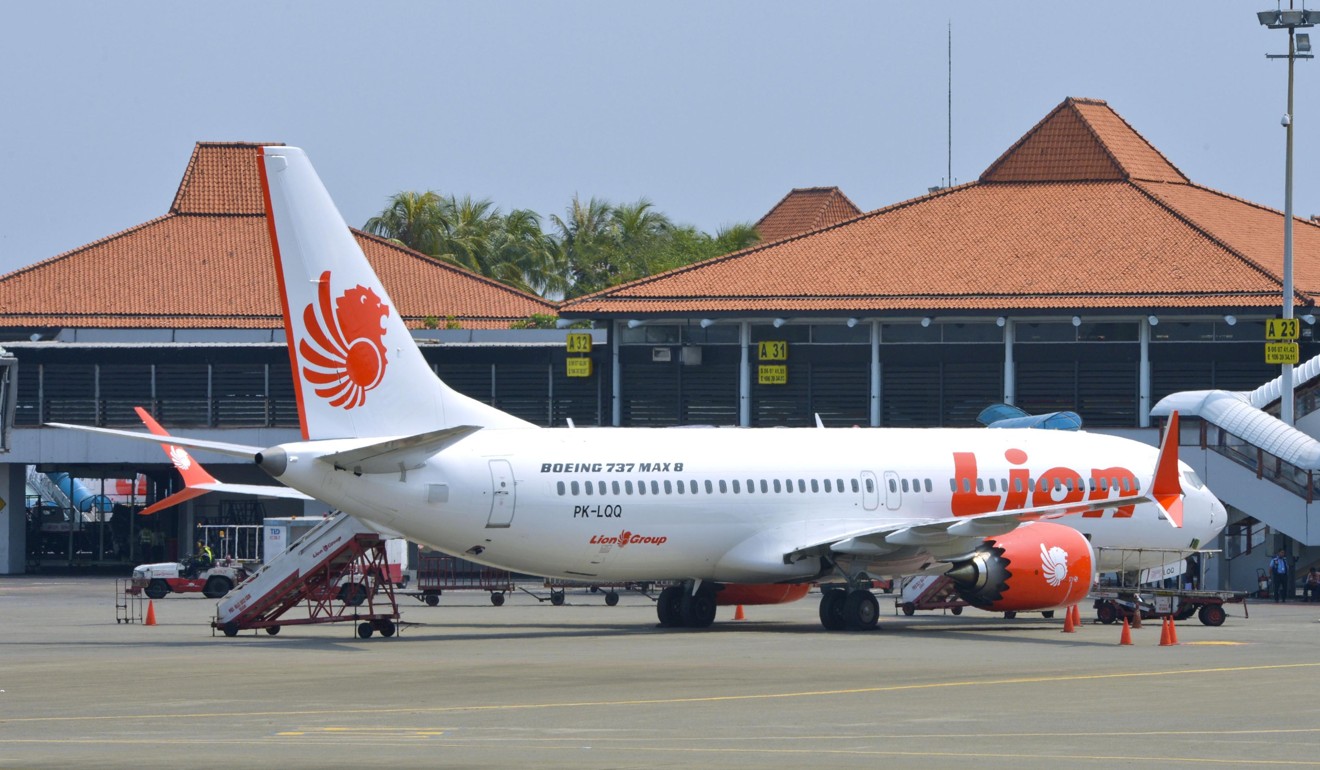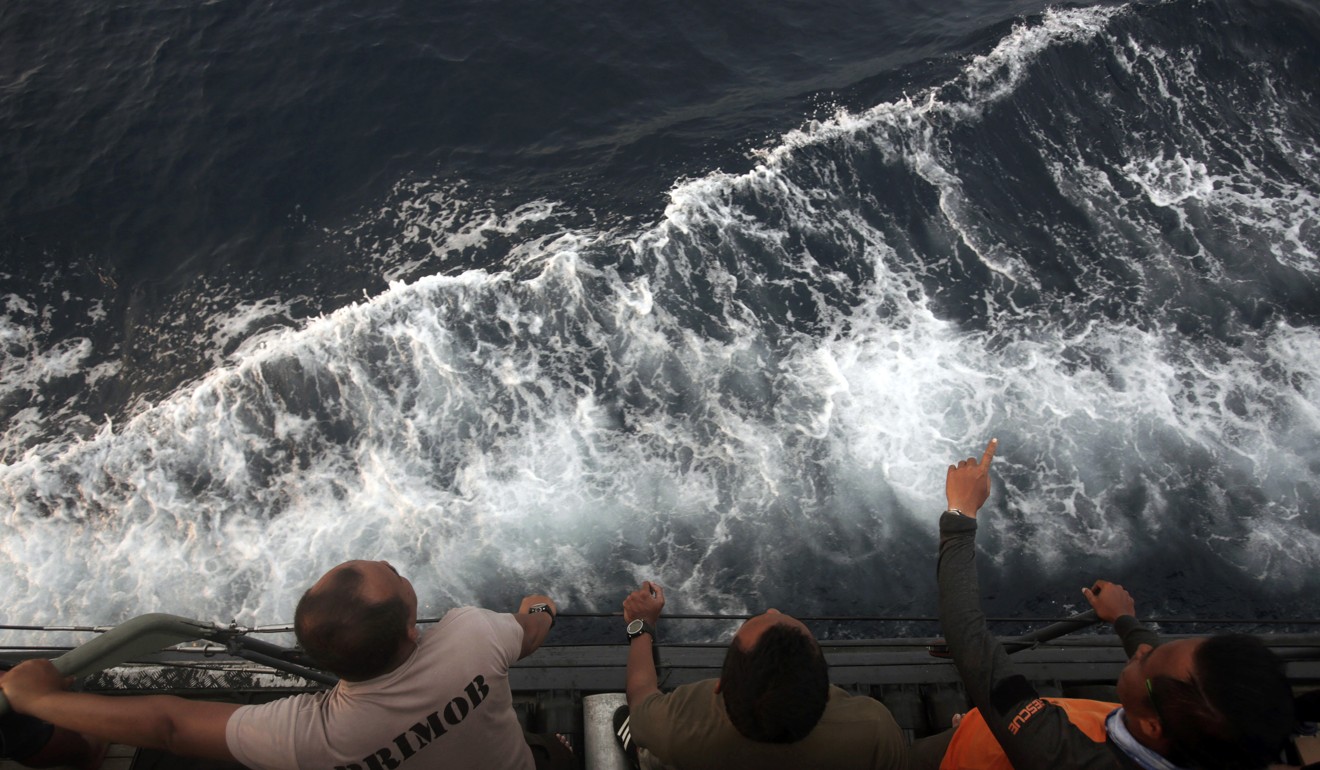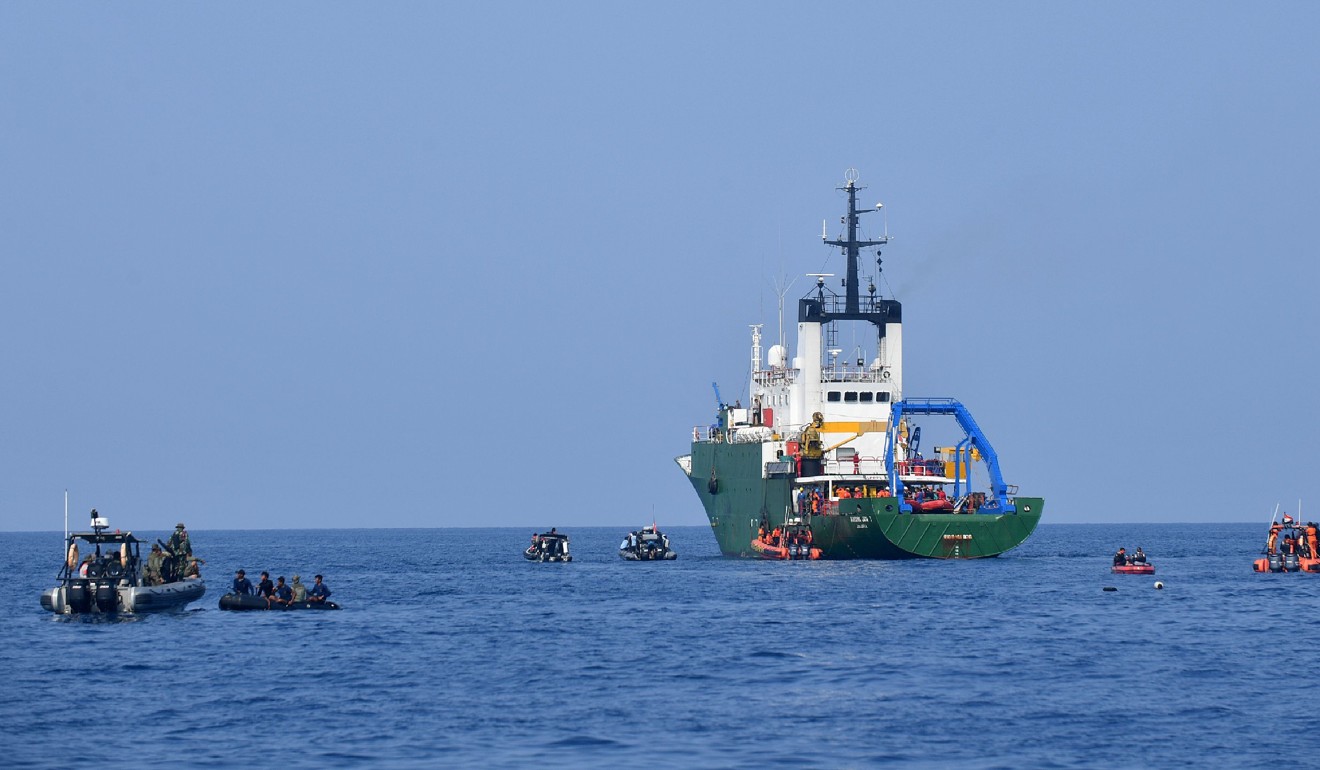
Pilots warned Lion Air of airspeed fault on doomed plane on Sunday. It crashed on its next flight
- The airline has revealed that crew said sensors used to calculate speed and altitude had malfunctioned on a flight from Bali on Sunday
- The fault was reported and the sensors checked and given the all-clear by Lion Air, but the plane crashed on its very next flight, likely killing 189 people
The Lion Air jet that crashed into the Java Sea off Indonesia earlier this week, with the presumed loss of 189 lives, had experienced problems with the sensors used to calculate altitude and speed on its previous flight, an issue that could help explain why the plane dove into the water.
Pilots on the nearly new Boeing 737 Max reported the issue after flying from Denpasar to Jakarta the night before Monday’s accident, Lion Air spokesman Danang Mandala Prihantoro said Wednesday. The instruments were checked by maintenance workers overnight and the plane was cleared to fly, Prihantoro said.
LATEST: Black box from crashed Lion Air plane recovered by divers
While it will be days or weeks before definitive information emerges in the crash, which occurred shortly after takeoff, discrepancies in speed and altitude readings can cause confusion on the cockpit and have led to accidents in the past, including the 2009 crash of an Air France plane in the Atlantic Ocean.
Flight-tracking data before the Lion Air crash showed the plane was varying its altitude and speed, a possible indication that the pilots weren’t getting accurate information from the aircraft’s air-pressure sensors.
Erroneous sensors could be an explanation for the flight track data, said John Cox, president of Safety Operating Systems and a former airline pilot.
But Cox and others cautioned that it is too soon to say what happened on the Lion Air flight and some of the flight data – such as speeds that weren’t extreme and none of the highly abrupt manoeuvres that preceded the Air France jet’s loss of control – may suggest some other cause.
Authorities ‘confident’ crashed Lion Air jet has been found
Indonesia ordered Lion Air to fire its technical director and started an audit of the carrier’s maintenance facility after the disaster. The airline also dismissed the engineer who cleared the ill-fated flight JT610 even after the pilots had reported the problems a day before the crash.
The removals were ordered on the recommendations from the National Transport Safety Board, the Transport Ministry said in a statement in Jakarta on Wednesday.
Indonesia’s National Search and Rescue Agency hopes to find the plane’s crash-proof flight recorders and the main wreckage of Flight JT610 on Wednesday night, said M. Syaugi, head of the agency.
Search teams have picked up sound signals from the so-called pingers attached to the recorders, which activate when they come in contact with water to make them easier to locate, Syaugi said.
Search and rescue teams are confident they have located jet’s fuselage, National Military Chief Hadi Tjahjanto said.
“We have located the area where we strongly believe the plane’s black box is located. The large parts of the aircraft should be nearby,” Tjahjanto said.

Even with modern GPS tracking, planes need to calculate their precise speed through the air. To determine airspeed – which can vary substantially compared to the speed over the ground due to winds – aircraft rely on Pitot tubes which measure the air rushing into them.
By comparing that pressure against the ambient air pressure – which is obtained by what are known as static ports – aircraft can determine airspeed.
If either of the pressure sensors are blocked, it can cause erroneous readings. In the case of the Air France flight, investigators concluded that a high-altitude ice storm clogged the Pitot tubes.
Modern jetliners are equipped with three separate airspeed sensor systems as backups. If one goes bad, pilots are trained to check the other readings and disregard the one that’s incorrect.
Lion Air technical director ‘removed from duties’ after deadly crash
Lion Air and investigators haven’t provided details about the issue on the previous flight Sunday night. Data provided by flight tracking company FlightRadar24 showed that the jet took off and reached an altitude of 1,692m, then dropped to 1,410m, an unusual altitude loss at a time when aircraft normally climb steadily.
The plane then resumed its climb, but never climbed above 8,500m. Jetliners almost never fly below 9,100m because cruising at the lower altitudes is less fuel efficient. However, planes with partially malfunctioning altitude sensors aren’t allowed above 8,500m.
“Every aircraft that we have will go through transit, preflight and post-flight checks,” said Lion Air’s Prihantoro. “We are conducting inspection and maintenance if needed on every aircraft.”

United Technologies Corp is a supplier of the systems to the 737 Max, according to Airframer.com, a website that tracks suppliers of aircraft components. A company representative said she wasn’t immediately able to confirm whether its equipment was on the Lion Air plane.
Indonesia’s National Transportation Safety Committee, which is leading the investigation, has interviewed pilots from the previous flight, Ony Soerjo Wibowo, an investigator, told a news conference on Tuesday.
In the 2009 Air France accident, investigators concluded that the Pitot tubes had become clogged with ice and all three of the plane’s speed indicators failed at different times, according to the final report of France’s Office of Investigation and Analysis.
A silent plunge, then a deafening crash: how Indonesia’s Lion Air tragedy unfolded
The routine flight from Rio de Janeiro to Paris was interrupted with a cacophony of alarms and confusing information. Their autopilot disconnected, speed indicators went haywire and warnings sounded indicating they were going too slow. “We haven’t got a good display,” one of the pilots said, according to the accident report.
Completely flummoxed, the pilots abruptly climbed and then lost control, allowing the plane to plunge for about four minutes until it slammed into the water.
While such failures happen fairly frequently and pilots should be able to continue flying the plane until the problem resolves itself, a handful of airline accidents such as the Air France crash show they can be confusing if pilots are startled and don’t react properly.

A charter flight leaving the Dominican Republic in 1996 crashed, killing 189 people, after the captain’s airspeed became inaccurate. While it was never proven, a wasp’s nest in the Pitot tube was suspected as the reason for the error.
An Aeroperu flight that crashed in 1996, killing 70, was blamed by the Peruvian government on tape that had been left over the static ports. Shortly after takeoff, pilots received nearly simultaneous cockpit warnings that they were going too fast, too slow and too close to the ground, according to the investigation.
While it’s too early to know if airspeed indicators will prove to be related to Monday’s accident, the possibility underscores the need for better and more consistent pilot training, said David Greenberg, an industry consultant and former operations executive at Delta Air Lines.
Greenberg, who also served as chief operating officer at Korean Air Lines, said US airlines drill pilots for such contingencies in the classroom and flight simulators.
Partially as a result of the Air France crash, the US Federal Aviation Administration in recent years revamped pilot training for how to handle unusual speeds and cases in which the plane goes out of control. It’s now common for airline pilots to receive simulator training on how to handle a failure of the plane’s speed indicators.

